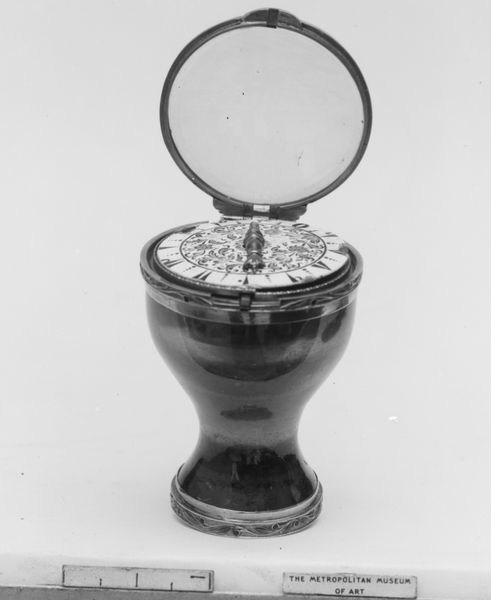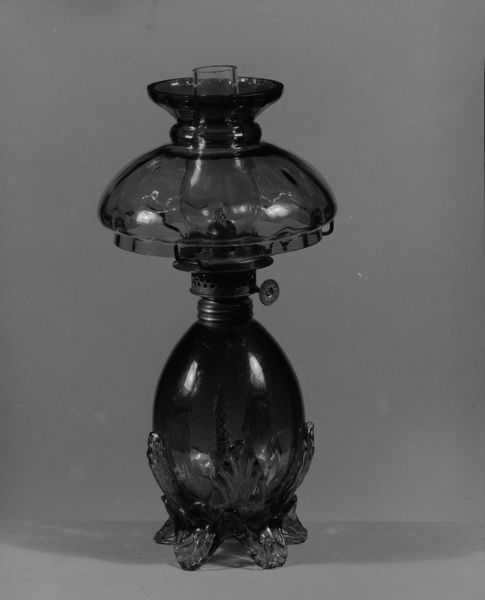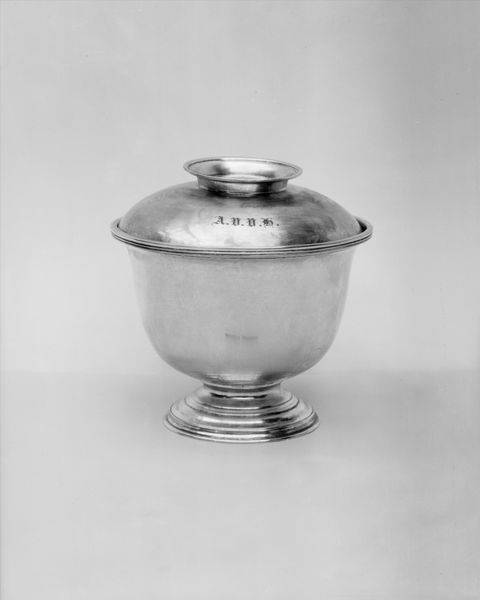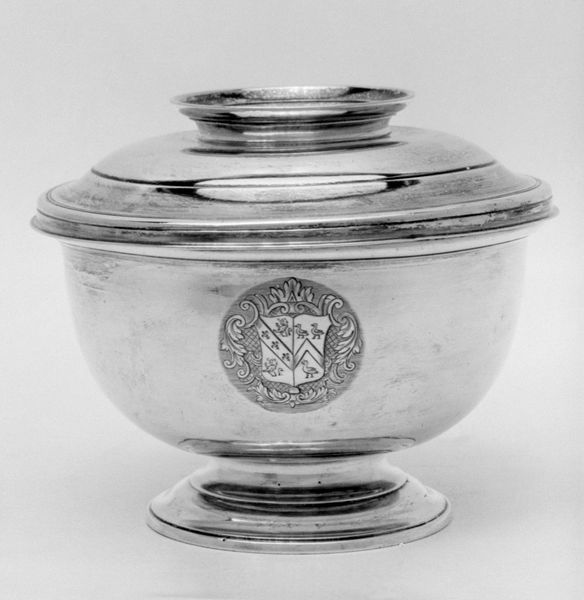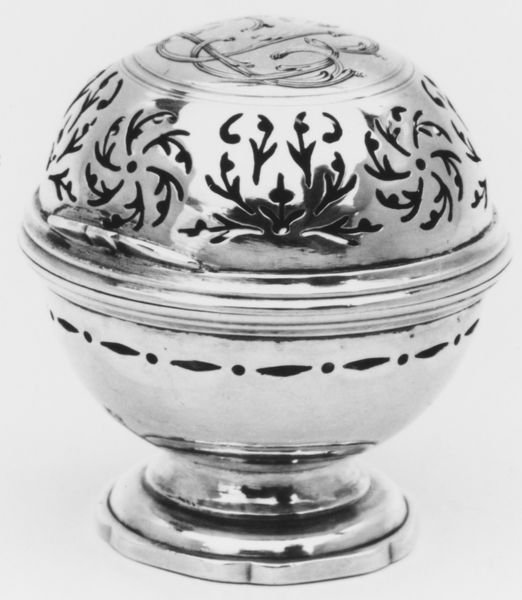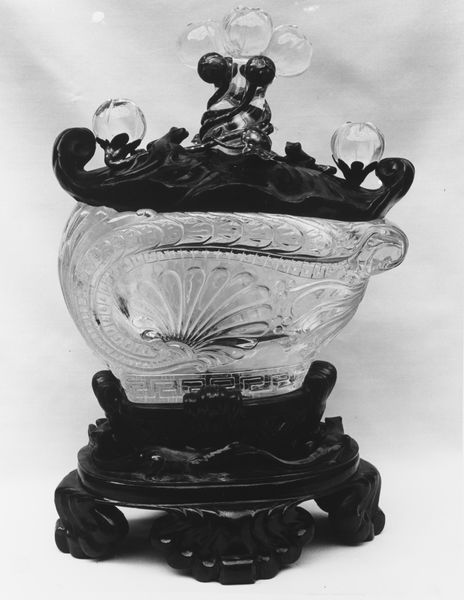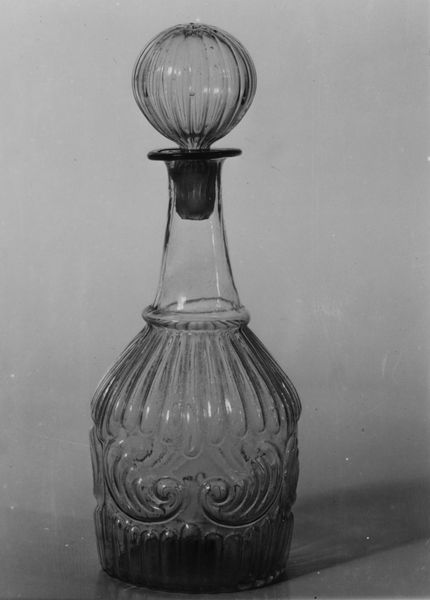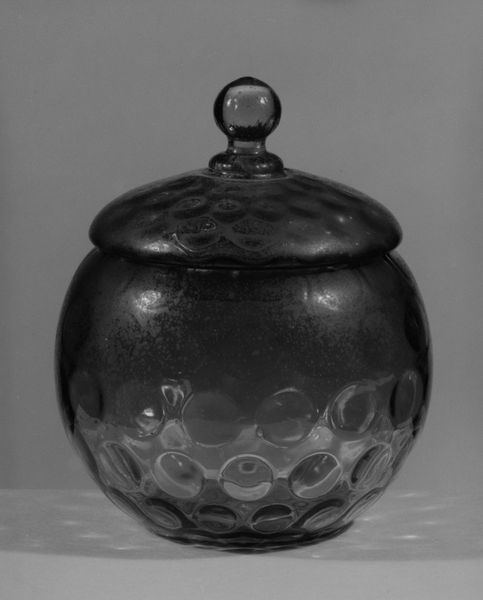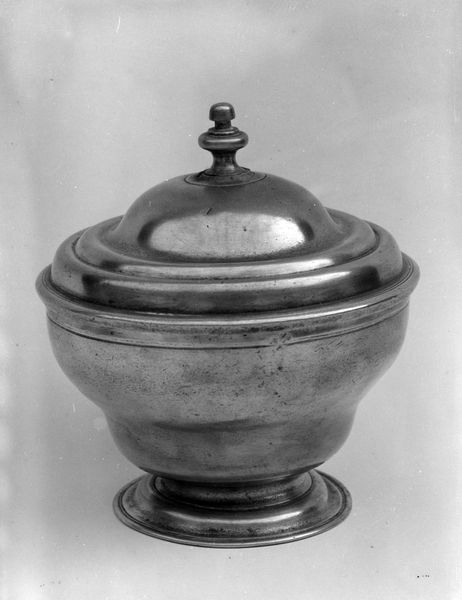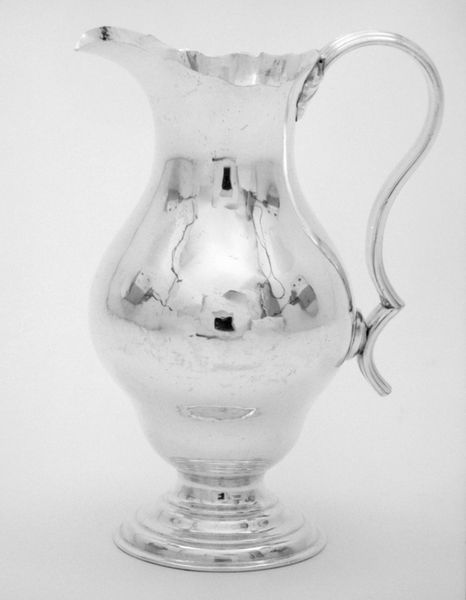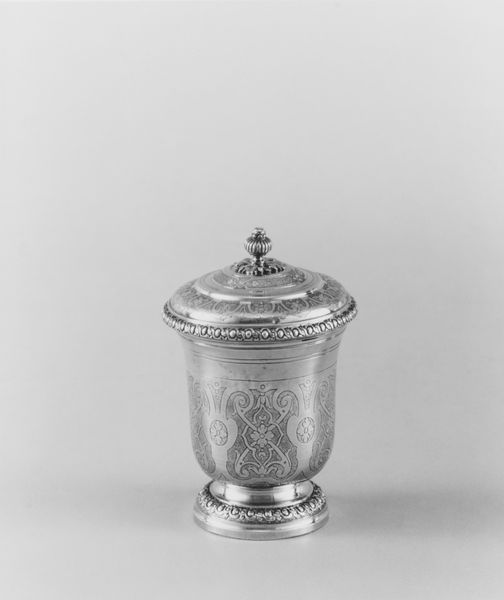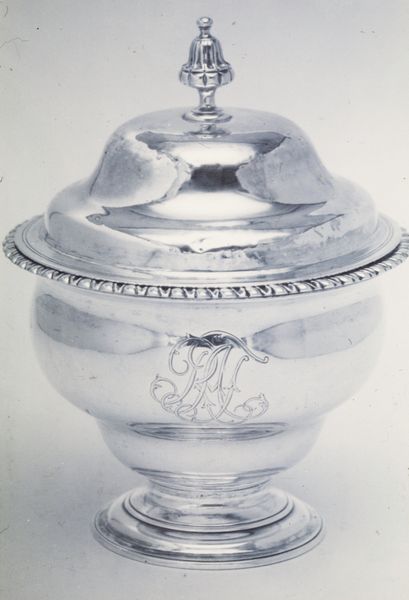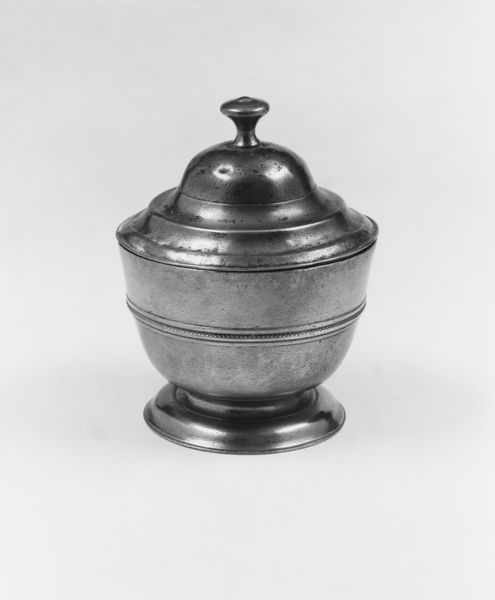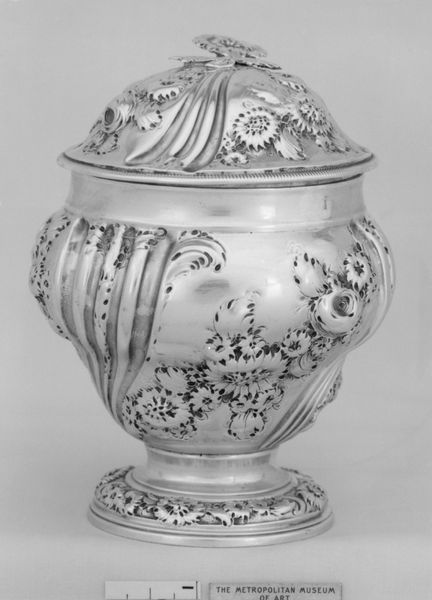
Miniature toilet box (one of a pair) 1772 - 1774
0:00
0:00
Dimensions: Height: 2 in. (5.1 cm)
Copyright: Public Domain
Curator: Immediately striking—it's a silvery orb, poised delicately on a tiered base. It almost feels weightless despite the visible metallic gleam. Editor: Indeed! We’re looking at a “Miniature toilet box (one of a pair),” crafted between 1772 and 1774 by Pierre François Rigal. This Rococo-style decorative art piece is silver, currently held in the collection of the Metropolitan Museum of Art. Curator: "Toilet box" feels like such an understatement. The smoothness of the silver is exquisite, and the lid's engraved design is elegant and almost playful, while also creating exclusive private spheres in palatial contexts. What function did this "box" actually fulfill? Editor: Function, precisely. These objects were more than mere containers, embodying status and access. The very term “toilette” at the time designated the act of beautification that occurred in the private room. Curator: And consider the social context. Silver signified wealth, reflecting aristocratic power amid growing social inequities. This small object is a potent symbol of pre-revolutionary French society and conspicuous consumption. Editor: Observe how the light catches the rounded surface, how the slight asymmetry hints at handcrafting versus mechanical reproduction. The texture of the silver—even in image—is palpable. The Rococo aesthetic is epitomized through these intricate details. Curator: Right, the scale! Miniature objects held an immense allure for 18th-century elites and reflect their specific taste in collecting art. Owning pieces such as this served as proof of refined sensitivity, taste, wealth, leisure and education in art. Editor: I'm struck by how an object so small manages to contain so much: both a literal substance—powder, perhaps—but also so many meanings and power dynamics that ripple across time. Curator: Ultimately, examining art like this demands an interdisciplinary approach that addresses its social and political undertones in equal measure to its material form and aesthetics. Editor: And its beauty beckons an immersion into form that expands our capacity to notice visual relationships—revealing hidden narratives within the artist’s handcraft.
Comments
No comments
Be the first to comment and join the conversation on the ultimate creative platform.
